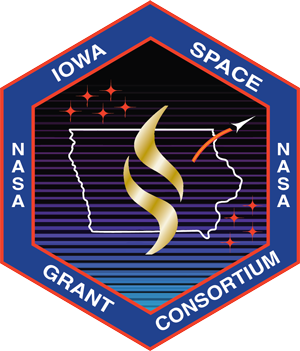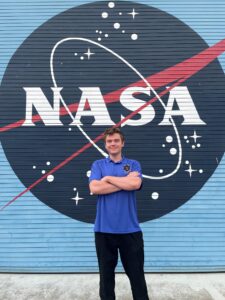Final Goals of your Project/s:
The primary goals of my projects were to continue work with the Reduced Atmospheric Pressure Testing of Rotors (RAPTOR) wind tunnel and complete design of the RAPTOR Wind-Tunnel Autonomous Target Characterization for Helicopters (WATCH) flow characterization system. With regards to the Rotorcraft Computation Fluid Dynamics (RotCFD) work, the goal was to verify the performance of the Mars Science Helicopter (MSH) in Mars atmospheric conditions and compare to the results to Comprehensive Hierarchical Aeromechanics Rotorcraft Model (CHARM) predictions. Work on the Mid Air Helicopter Descent (MAHD) test stand involved the creation of a collective control system that could either manually or remotely alter the collective of the rotor blades being used for testing. Finally, my goal with the Blade Evaluation and Structural Testing (BEST) stand involved creating a blast shield to put in the Aerolab and be used during testing and creating a loadcell-motor interface for the new stand system.
Describe what you did during your internship:
I was able to be apart of a lot of projects during my internship and get work done for each one of them. With regards to the RAPTOR WATCH system, I was able to complete any alterations that needed to be made to the previous model in order to reflect the selections for the translation system made by previous interns. After designing the system to fit the components and be capable of assembly, I was lead all the way up to selecting and purchasing all the parts for WATCH which will be assembled by myself and another past RAPTOR intern during the summer.
Work continued during my design process of WATCH on the validation of the MSH’s performance as dictated by CHARM through simulations run in RotCFD. Previously generated files for the RAPTOR wind tunnel were imported into RotCFD and the MSH rotor was tested, inside the simulated RAPTOR wind tunnel, to gather data on how unstructured, viscous, flow effects the performance results. I then took the results and tabulated/plotted them to compare them easily to our CHARM predictions. Work on the MAHD collective control system began with myself understanding the requirements for the project and beginning SOLIDWORKS modeling of possible solutions. Designing both the manual and remotely operated systems involved looking through commercially available parts and inexpensive components to assemble the most effective, mechanically simple, design that could perform the required task.
After it was designed, the parts were 3D printed as a test piece and tested it to ensure it was functional. Finally, the work I performed relating to the BEST stand was a complete design of a blast shield that could effectively protect observers from possible testing failures. This was done through modeling on SOLIDWORKS and tipping analysis to ensure its safety. Also, work performed for the loadcell-motor interface system was done on SOLIDWORKS and, after designing it, I milled the aluminum components myself and tested the interfacing system.
Did you achieve your goals? What were the results?:
Overall I achieved most of what I had set out to do during this internship. Specifically related to all of the mechanical design, I performed on RAPTOR WATCH, the MAHD collective system, and the BEST stand accessories. I learned a significant amount more about SOLIDWORKS and FEA as well as the engineering design process. Going through the process of thinking of solutions, designing them, verifying them, and, in some cases, physically completing them allowed me to accomplish my goal of understanding engineering completely.
Results from this learning process lead all three of my goals to their final stages of construction and final validation which I will also be able to be apart of in the summer. With regards to RotCFD, I gained a deeper understanding of the program and the results we got. While the exact results we got were flawed towards the end of the term, we determined what the issue was and heading into the next internship term, we should be able to effectively validate the results from CHARM.
Describe positive lessons learned:
This internship has provided me with a lot of positive lessons. Firstly, I learned the importance of working with those around me and getting to know them and how much it can positively effect my experiences. I also learned that if you put effort towards learning a new skill and continue to persevere, you can advance your abilities in that skill beyond what you though you could. These skills helped me enjoy my experience here and allowed me to learn more than I ever expected to learn about both engineering skills and STEM itself.
Describe negative lessons learned:
The main negative lesson I learned during this experience was that it is important not to focus too hard on your work and continue to enjoy the other parts. I found myself getting stressed at times by work and it began to effect my time out of work as well. A better balance of not letting work effect the other times I should be enjoying is very important and I have improved with this significantly.

